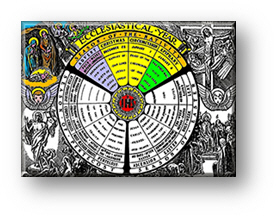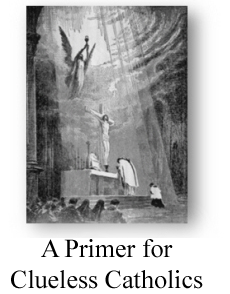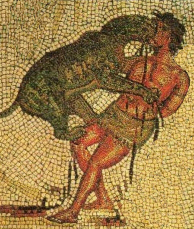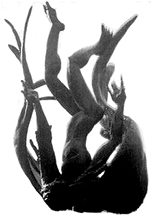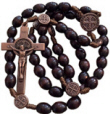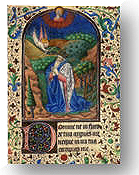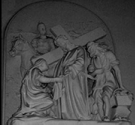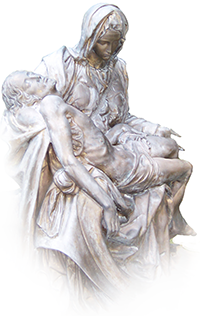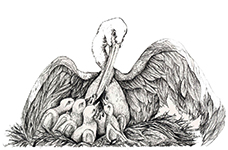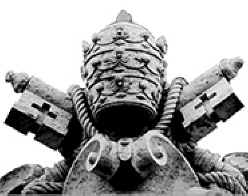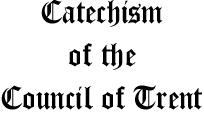|
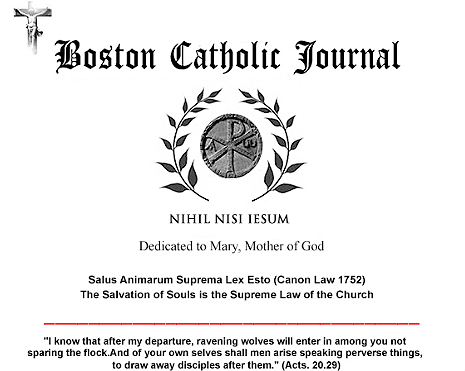
The
Tortures and Torments
of the Christian Martyrs
from
De SS. Martyrum Cruciatibus
(a
Modern Edition)
Chapter VIII
Of Various
other Methods by which Christ’s Holy Martyrs were Tortured with Fire
Day
by day the Devil, the Prince of
Darkness and Father of Lies, was busy leading the idolatrous Emperors
and their ministers into new methods through which — over and
above those already described — they could further torture
Christ’s servants. Some were forced to walk barefoot over a floor strewn
with live coals, among whom were St. Tiburtius, a most noble Roman,
and St. Pontianus; while others again were simply thrown into the fire
to be burned. In this way the crown of martyrdom was gained by St. Polycarp,
Saints Theodora, Euphrosyna, Flavia Domitilla, St. Fructuosus a Bishop,
Saints Aubonia and Theophila virgins and martyrs, along with twenty
thousand Christians mentioned in the Greek Menology,
on December 28:
“The day of trial
of the twenty thousand saints which were martyred under the
Emperor Maximian, being burned to death at Nicomedia.”
Furthermore, at Satan’s
instigation Christ’s faithful followers were sometimes burned entire,
and at other times in part, as when their heads were subjected to coals
of fire that were put alight into their mouths or ears, or else the
holy martyrs would be bound down on iron beds, and molten lead, boiling
oil, blazing pitch, wax, sulfur, and similar substances poured over
their limbs. We witness these particular types of torments in the
Histories of a great many noble martyrs, such as Saints Agapitus,
Timothy, Apollinaris, Pelagius, Victor a soldier; Felix and Fortunatus,
Boniface, Claudius and his companions, and a host of others.
Not content with these torments, the Devil further provoked the tormentors
of Christ’s martyrs who were subsequently stripped of their clothes
and rolled back and forth over sharp shards and burning coals, or else
forced to hold live coals placed in their hands along with incense before
the altars of idols, so that, if they should chance to toss down the
burning embers, they might thus appear to have offered incense to the
false gods of the Heathen. The first of these forms of torture is mentioned
in the Acts of Saints Firmus and Rusticus and Saints Agatha and
Macra, virgins and martyrs; the second in the Histories of the
martyrdom of St. Procopius, as also of St. Cyrilla, virgin, who is commemorated
under July 5th in these words:
“Commemoration of
the blessed martyr, St. Cyrilla, who lived under the Emperors Diocletian
and Maximian and belonged to the city of Cyrene in Libya. She was
accused before Dignianus the Governor, and stood for judgment along
with Lucia and Roa, two pious women. And when she could not be induced
to make offering to idols, live coals were put in her hands and
incense, and she was forced to sacrifice. But she cried aloud, ’This
enforced act is not to pay sacrifice’. So when her fingers were
consumed, she was then hung up and scourged, and presently when
she was taken down from the stake, blood flowed from her wounds
and milk from her breast like a torrent, and so this blessed Saint
and Martyr gave up her spirit to God.”
In this respect it is
noteworthy that the Emperor Julian, called the Apostate, attempted
to persuade Christian soldiers of his army by promising them gifts if
they made an offering of incense for the fire on the day of the Imperial
distribution of largess. St. Gregory Nazianzen, speaks of this in his
first Invective against the this Emperor:
“Now the day of the
Imperial largess was come, whether the actual birthday (of Julian
the Apostate), or so fixed for that date with that Emperor’s usual
cunning artfulness, and all soldiers were bound to present themselves,
to the end that each, according to his proper rank and dignity,
might receive a gift. Once more the same scene of sordid greed,
the same tale of impiety. Anxious to veil his cruelty under an aspect
of good-natured liberality, the Emperor endeavored to entice and
allure with gifts of money the foolish pride and avarice of the
soldiers — qualities that always play a great part in their lives.
So there sat the Prince presiding in state, holding high holiday
against goodness and piety, and not a little elated at the cunning
of his own devices. You might have deemed him a Melampus or a Proteus,
so ready was he to follow any course or take on any shape or form
... There was gold on one hand, incense on the other, while fire
was ready close at hand and men standing by to urge compliance.
Indeed it was a plausible tale enough — it was the regular custom
of the Imperial largess, an old and time-honored ceremonial. What
was it? Merely to set the incense alight ... and so earn the wages
of death at the Emperor’s hand, to accept how small a payment for
how great a sacrifice, the loss of their souls and an act of direct
impiety against Almighty God!
A wretched reward truly, so poor a recompense! The whole army was
put up for sale with flattery by one and the same vile trick; the
soldiers who had conquered the world with their arms were undone
for a little fire and gold and a puff of incense smoke, most of
them — and this was the most grievous point of all — not even knowing
their own ruin. A man came forward, hoping to make a little gain;
and for gain he lost his own soul. He kissed the Emperor’s hand
— and knew not that he was greeting his own executioner. Nor even
if they did see this, were they any the better for the fact, seeing
that once they were caught in the snare they held their stupid acquiescence
as a law that could in no way be broken. What myriads of Persians,
what hosts of bowmen and stingers, what army in panoply of steel,
invulnerable on every side, what engines for battering down the
walls of cities, could have brought about a result which one hand
and one occasion added to evil purpose easily affected?
At this point I will intersperse a short story, sadder yet and more
pitiful still than that above. It is said that some of them who
had been caught and persuaded in ignorance, returning after being
thus unwittingly involved in disaster, sat down to eat with their
comrades in barracks; then, when the meal had come to the customary
draught of cold water, just as if nothing serious had happened to
alter their condition, they lifted up their eyes, as was their custom,
and invoked Christ making the Sign of the Cross. But one of their
comrades marveling at this, asked, ’Why, what is this? Do you invoke
Christ after abjuring Him? ’Startled at this question, they exclaimed,
‘No! How have we abjured Him? What is this strange thing you say?’
But the other answered, ’Why, by offering incense for the fire;
what else is this, pray, but denying Christ?’ Then without an instant’s
delay, they sprung up from table, and like madmen, boiling with
zeal and indignation, rushed through the Forum shouting, ’Christians,
Christians are we at heart! Let all men hear us say so, and most
especially God, for Whom we live and are ready to die. The pledge
we gave Thee, Christ our Savior, we have not broken; our holy profession
we have not abjured. If our hand has offended, our intention never
certainly went with it. We have been motivated by the Emperor’s
trick, not contaminated with gold. We wash our hands of the wickedness,
and will purge ourselves with blood.’ And afterward going quickly
to the Emperor, and boldly and defiantly casting down the gold,
they cried out: ’It is not gifts we have received, Emperor, but
to death we have been doomed. Not to receive honor were we summoned,
as you would have had us believe, but to be branded with infamy.
Grant your soldiers this gift: sacrifice us for Christ, and kill
us for His sake, whose empire alone we acknowledge. Pay fire with
fire, and for the ashes of that sacrifice burn us to ashes. Cut
off our hands, those hands we wickedly stretched forth, and our
feet that carried to us to an evil deed. Let others have your gifts,
who need not be ashamed to take them; for us Christ is enough and
more than enough, whom we value above all price.’
“The fervor with which they spoke at the same time aroused their
fellow soldiers to realize the deception to which they had been
exposed, and to themselves recover from their illusion and
seek to appease Christ with their blood. Then the Emperor was greatly
angered; yet would he not kill them openly, and so make them martyrs
(who were already martyrs inasmuch as the intent was within them),
but rather punished them with exile and avenged the slight done
him by this penalty. But in doing so he only benefited them the
more, by removing of them far from his odious sacrifices and malicious
designs.”
The most blessed Nazianzen,
then, shows us beyond a doubt how these most gallant champions of Christ
could neither by the scorn nor the cunning of that most wicked and apostate
Emperor be cast down from the height of their piety, but were, instead,
all the more steadfast and ready to endure death for Christ’s sake.
Thus was Julian’s cunning all in vain, and his attempt to turn them
from the faith of Christ availed him nothing.
Two
Other Similar Devices by which the Heathen attempted to Persuade
Christians to Renounce their Faith
Eusebius relates in his
Ecclesiastical History how Christians under the Emperor Diocletian
were sometimes, forced to join the number of those sacrificing, so as
to appear to have made an offering to idols. This is what he
says:
“Now of the remainder,
each endured some form of torture; one had his body entirely torn
with whips, another suffered the racking of all his limbs, and still
another was mangled with sharp razors beyond all human endurance.
Some barely made an altogether honorable end, and some failed to
endure the trial. Some would be violently shoved forward and brought
up to perform these foul and abominable rites, and — even
though he had never sacrificed at all — would be let go just as
if he had made the required offering; another — though he had never
been near the Temple or touched anything impure — yet in virtue
of his heathen friends testifying that he had made the sacrifice,
bore their testimony in silence and so saved himself from the peril.
One, rescued half dead and half alive, is cast forth as a dead man;
another, prostrated on the earth as if in acquiescence was counted
among the number of worshippers, and spared. Some, on the contrary,
cried out and announced in a loud voice, that they utterly and entirely
disavowed the very ceremony they were taking part in; while others
openly confessing the life-giving name of Christ, proclaimed themselves
Christians; and yet others emphatically declared they had never
offered sacrifice to idols and never would. Nevertheless, even these,
struck in the mouth and forced to silence, battered and buffeted
on face and cheeks by the rough hands of numerous attendants appointed
for the purpose, were at last violently expelled the assembly —
but deemed their being reprieved from martyrdom a great good gained,
since they appeared not to have renounced the Faith even
though they were entirely prepared to do so if subjected to duress.”
A similar pretense was
practiced by these servants of Satan in yet another way, for they used
to force the meat offered to idols into the Christians’ mouths against
their will, and to pour the wine of sacrifice down their throats. So
in the Acts of the Blessed Martyrs, Saints Tharacus, Probus,
and Andronicus, we find the following:
“After this, the Governor
ordered flesh which had been offered and wine of sacrifice to be
brought, and said, ‘Pour the wine down his throat and put meat from
the altar into his mouth.’ And while this was being done, Probus
cried, ‘May the Lord look down from His seat on high and see the
compulsion used, and judge my case justly.’ The Governor said, ‘Many
torments have you endured, unhappy man; and now you have accepted
the sacrifice.’ Probus replied, ’Little have you effected, by using
compulsion; the Lord knows my true heart.’ The Governor replied,
‘Ah! but you have both eaten and drunk.’ Probus answered, ‘The Lord
knows and has seen the compulsion I am under.’ And again a little
further on, the same author, speaking of St. Andronicus tells us:
“The Governor said, ‘Open his lips, and put in his mouth flesh from
the altar, and pour the wine down his throat.’ While this was being
done, Andronicus exclaimed, ‘Lord, Lord! I suffer compulsion.’ The
Governor asked, ‘How long can you endure under torture? There! You
have tasted of the sacrifice!’ Andronicus made answer, ‘All men
are sinners which worship idols, you and your Emperors alike.’ ”
But to return from this
digression let us resume our examination of the ways that the
Holy Martyrs were subjected to the torture of fire. We find that they
were often bound to upright stakes, and a fire kindled around them,
or stretched out and tied to four pegs and a blaze made underneath them;
at other times they were cast into fiery furnaces, into a flaming pile,
or into pits full of live coals, or else thrown into great casks. Sometimes,
again, they were enclosed in chambers, shrines, or baths, that were
then set on fire, with the martyrs burning inside; at other times
they were tied with ropes of flax saturated with oil, their bodies drenched
with sulfur and resin, their feet bound about with flax dipped in oil,
and then set alight, or else put in boats filled with flax and pitch,
and then set aflame to be burned at sea, through which they offered
their unpolluted and unstained souls to God, the Maker and Creator of
all things.
Evidence of these methods are to be found in various Acts of
Martyrs: the first — involving their being bound to stakes and
burned is to be found in the Histories of St. Polycarp and St.
Tharacus; the second — being tied to four pegs with a fire kindled beneath,
in the Acts of St. Anastasia, a Roman virgin and martyr; the
third, fourth, fifth, and sixth — respectively being thrown into
furnaces, pits, or casks to be burned, in the Acts of Saints
Emilianus and Paphnutius, of three sisters, Faith, Hope, and Charity,
virgins and martyrs, of Saints Agnes, Apollonia, and Dorothy, also virgins
and martyrs. In the History of St. Dorothy, we read
how two sisters, Christe and Caliste, were brought back by her holy
care to the fold of the Christian Faith, from the which they had fallen
away, in these words:
“The Governor sent
a message to Christe and Caliste, bidding them to his presence along
with Dorothy; and after taking them aside, he began to ask them
whether they had succeeded in changing Dorothy’s sentiments. But
with one voice they made answer: ’We were mistaken and acted very
sinfully, when through fear of punishment and momentary pain we
sacrificed to idols, and asked her to do the same; but she led us
to repentance, so that we may now win Christ’s mercy.’ Then Sapritius
( the Governor) tore his clothes, and with great fury ordered them
to be tied together back to back and so cast into a cask, if they
refused to sacrifice. ...”
Of the seventh sort —
that of being imprisoned in chambers, shrines, or baths, and there burned
or suffocated — we find record in the Acts of Saints Domna and
Theophila, virgins and martyrs, and of the Roman virgins and holy martyrs,
Flavia Domitilla, Theodora, Euphrosyne and Crecilia.
What
is to be Understood by Suffocation in an Over-Heated Bath
We read in the History
of St. Cecilia, that she was shut up and stifled in a hot bath.
It should be understood therefore that that the Roman Baths were also
used as a means of putting criminals, offenders, and Christians to death.
To this end, victims were imprisoned in the first or hottest chamber
of the baths called the Sweating Room or Laconicum, that stifled
to death by means of excessive heat. These ancient Thermae, or
Hot Baths, consisted of four Chambers, the first, used to produce sweat,
was aptly called the Sweating Room, or Laconicum, or Hottest
Room for Copious Sweating; the other three being the Hot, the Tepid,
and the Cooling Rooms, respectively.
It was in the first room or the Laconicum, that the Blessed Martyrs
died. So in the History of St. Crecilia we find written:
“Then being extremely
angry, Almachius the Judge commanded her to be taken back to her
own house, and there consumed by the heat of the Baths. But although
she was shut up in the hot air of her bath-house and a great store
of wood for the fire placed under it day and night, she yet remained
unharmed within it, as if she had been placed only in the Cold Chamber,
and was made perfectly safe through God’s grace, to such an extent
that not the least part of her limbs was wet with so much as the
smallest trace of sweat.“
Gallenus, in writing of
the Laconicum, says: “On entering, they stay a while in the hot
air“, that is in the Laconicum; later on, “they go down into
a bath of hot water.“
We must now consider the remaining methods by which Christians were
burned with fire: to wit, the eighth, ninth, and tenth methods —
tied with ropes saturated in oil, feet bound with flax dipped in oil,
or bound and sent to sea in boats loaded with tow and pitch and then
set on fire. Of all these we have testimony in different Acts
of the Saints — of the last named [bound and sent to sea in boats
loaded with tow and pitch and then set on fire] in the History
of St. Restituta, virgin and martyr, of the eighth [tied with ropes
saturated in oil] and ninth [feet bound with flax dipped in oil]
in the accounts of the passion of St. Amphianus and of St. Ursicius.
The following words are recorded in the Roman Martyrology on
April 2:
“At Caesarea in Palestine,
anniversary of St. Amphianus the Martyr, who in the Persecution
of Maximin, for having remonstrated with Urbanus the Governor for
sacrificing to idols, was cruelly scourged, and most bitterly tortured,
his feet being wrapped in flax dipped in oil and then set on fire,
and finally thrown into the sea. So passing through fire and water,
he was brought at last to blissful consolation.“
The other, St. Ursicius,
is commemorated in the Greek Menology on August 24:
“Commemoration of
the Blessed Martyr St. Ursicius, who under the Emperor Maximin was
denounced to the Emperor from the city of Sibentum, lying inland
from Illyricum, and handed over to the Governor Aristides. When
he remained steadfast and unwavering in his profession, he was first
violently scourged with a whip made of bulls’ penises, then bound
round with ropes of flax steeped in oil, and then drenched with
sulfur and resin, he was set alight; and last of all, the sentence
of death was pronounced, and the Holy St. Ursicius was slain with
a drawn sword by the informer Valens. And having so won martyrdom,
he was given to the tomb by a pious woman, Simplicia by name.“
Of
the Deadly Tunic as an Instrument of Martyrdom
These forms of torture,
by which the most glorious Martyrs Amphianus and Ursicius died, are
very like, if indeed not identical to, a most terrible punishment that
the ancients called the Deadly Tunic. This was a shirt smeared
and saturated with flammable substances (as Seneca records in his
Epistles), which was then set alight, and the criminals wrapped
in it burned in a fearful conflagration. Both Tertullian and Crelius
make mention of this punishment as applied to Christian martyrs.
Tortures of a similar kind were used by the Heretics of our own day,
as recorded in the Theatre of Cruelties, on Domitius Hurley,
Archbishop of Cashel in Ireland, his native country:
“Accused of the offense
of having fortified some children with the Holy Sacrament of Confirmation,
he was arrested; and inasmuch as he refused to renounce the Catholic
faith, he was subjected by the Heretics to the tortures of the kind
described immediately above: greaves, or leggings, filled full of
oil were placed upon his legs, and once he was tied fast on a wooden
seat so that he could not move, he was set before a huge fire, and
the leggings being burned by the fierce flame, his shins were consumed
along with them, in such way that when the heretics came to draw
off the leggings, they tore away the flesh with them up to his knees,
leaving only the bare bones. One morning soon after this, about
three or four of the clock, his neck was set in a noose of willow
rods, that his agony might be the longer, and he was hanged. Thus
did he win the noble crown of martyrdom, and his spirit took flight
to the skies.“
We will close this chapter
we with a few quotes of similar instances provided by the Holy Fathers
or from the Histories of their lives. Concerning the Catholics
which were tormented by fire under Constantius, this is what St. Athanasius
says:
“But these (that is
the Arians, enemies of the Catholic Church) they shunned as murderers,
malefactors and robbers, for they overthrew Monasteries and set
fire to them to burn the Monks, and tore down their dwelling places
...“ and again in his Apology, “For setting virgins on blazing
fires, they strove thus to force them to confess the Arian faith.“
Further details of the
Catholics similarly persecuted under Valens are found in the History
of Theodoretus:
“But at Constantinople
the Arians loaded a ship with a company of pious priests, and launched
it into the deep without sails or tackle. Then embarking several
adherents of their own sect in another vessel, they instructed them
to set on fire the ship containing the priests. So this being done,
the priests, after struggling a while with fire and sea, were plunged
into the deep, and so won the crown of martyrdom. “
Similar accounts are to
be found in Sozomen and Socrates in their Ecclesiastical Histories,
as well as in Victor concerning Catholics under the Vandal Persecution:
“Some they slew by
scourging, some by hanging, others they burned in bonfires,“ and
again, writing of the martyrdom of St. Liberatus and his companions,
“This, however, came to the Tyrant’s ears, who, intoxicated with
fury, ordered them to be subjected to tortures hitherto unheard
of and to be laden with heavier chains. Moreover he commanded a
ship to be filled with bundles of dry faggots, and all his victims
being bound fast therein, to be set alight on the open sea and burned
up. ...“
Lastly concerning the
Catholics who were martyred under Leo or Constantine Copronymus, the
Roman Martyrology states the following on August 29,:
“Anniversary of Saints
Hypatius and Andrew. These were two priests which for the respect
they showed the sacred images were slaughtered by Leo, after their
beards had been steeped in pitch and set alight, and the scalp of
their heads torn off.“
The same is related under
November 28 of St. Stephen the Younger, who is said to have endured
the same punishment under Constantine Copronymus.
CHAPTER IX
Chapters:
1 -
2 -
3 -
4 -
5 -
6 -
7 -
8 -
9 -
10 -
11 -
12

Totally Faithful to the Sacred
Deposit of Faith entrusted to the Holy See in Rome
“Scio
opera tua ... quia modicum habes virtutem, et servasti verbum
Meum, nec non negasti Nomen Meum”
“I
know your works ... that you have but little power, and
yet you have kept My word, and have not denied My Name.”
(Apocalypse
3.8)
Copyright © 2004
- 2025 Boston Catholic Journal. All rights reserved. Unless
otherwise stated, permission is granted by the Boston Catholic
Journal for the copying and distribution of the articles
and audio files under the following conditions: No
additions, deletions, or changes are to be made to the text
or audio files in any way, and the copies may not be sold
for a profit. In the reproduction, in any format of any
image, graphic, text, or audio file, attribution must be
given to the Boston Catholic Journal.
|
|

